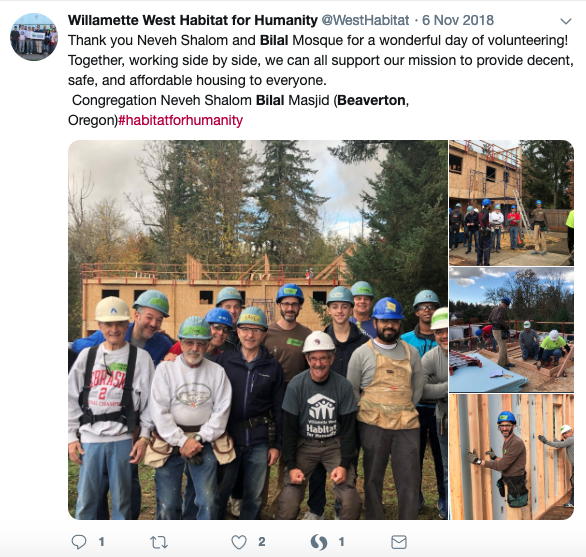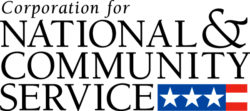 My long-time colleague and friend, Susan Ellis, along with Katherine Campbell, wrote the book on volunteerism in the USA – literally. It’s called By the People: A History of Americans as Volunteers. The latest and last version is the New Century Edition (2005) and it’s available for purchase from Energize.
My long-time colleague and friend, Susan Ellis, along with Katherine Campbell, wrote the book on volunteerism in the USA – literally. It’s called By the People: A History of Americans as Volunteers. The latest and last version is the New Century Edition (2005) and it’s available for purchase from Energize.
I remain stunned that this book isn’t cited at least once in most academic papers regarding volunteerism. It certainly should at least be referenced in any course at a USA college or university regarding volunteerism. It should be cited throughout Wikipedia articles on anything related to volunteerism or community service as well, and cited in any article that dares to try to talk about the history of volunteer firefighting in the USA.
The book does a fantastic job of showing how volunteers helped to form some of the largest organizations in the USA today, from Goodwill to the YWCA to the American Red Cross to the Sierra Club – efforts often lead by women – and how volunteers have played such an important role in establishing the American character, one that relishes community-driven, independent and do-it-yourself driven efforts to address community needs and concerns. The book provides repeated examples of how volunteers seized a social issue in the USA, amplified it and pushed for it to be addressed, from the abolition of slavery to the health of soldiers to the civil rights movement and so many things before and after. I love how the role of women in leading volunteering efforts is repeatedly cited, not regulated to one chapter but permeating the book in example after example.
The parts of the book about volunteer firefighting history are particularly enlightening. The book notes that, in the early days of volunteer firefighting in the USA, in the 1800s and 1900s, “Because of the danger involved, being a volunteer fireman carried social status. Rivalry was strong among the volunteers, and street fights frequently erupted as companies battled to reach fires first.” The fights sometimes lasted for days! The authors quote A History of the People of the United States by John Bach McMaster, who said of the firefighter fights, “Of all causes of disorder they were the worst. Around their houses hung gangs of loafers, ‘runners’ who, when an alarm was run, ran with the engines and took part in the fight almost certain to occur.” These mob scenes ultimately brought an end to voluntary firefighting in the major cities in the USA, though volunteer fire brigades in urban settings came back during times of war.
It would be interesting to see if a revision of the book would have addressed the approach of the volunteer firefighting union in the USA, which actively discourages volunteer firefighting in a push for professionalization of all roles, or the rise in anti-volunteering movements – but, sadly, Susan passed away earlier this year, so the book will not be revised.
Virtual volunteering started as soon as the Internet began, in the 1970s, and the 2005 edition of By the People: A History of Americans as Volunteers mentions virtual volunteering at least five times – it’s an example of just how in-tune Susan was with emerging trends in volunteerism (while now, in 2019, there are still some researchers and consultants who will try to say virtual volunteering is “new”). There’s also good mention of the International Year of Volunteers in 2001, a global campaign that was one of the most popular designations by the United Nations in its history of such “Year of” declarations.
I do have some criticisms. For instance, I’m shocked that the authors don’t go much more into the role that volunteers played in forcing the US Government in the 1980s to address the AIDS crisis, to elevate discussions about HIV, and to meet the needs of people with HIV/AIDS. The unique mobilization of volunteers in these causes is worthy of an entire book itself, and certainly worthy of more than a small mention in this book.
Also, there is nothing about American Indians before their time being forced on reservations, except their violence towards whites. There are documented examples of volunteer aid from American Indians to early White settlers and these are worthy of note.
And then there are some jaw-dropping statements. One is that “Not until well into the twentieth century did most Americans have the leisure and subsequent need and desire for the arts.” In fact, most Americans – and most people – have always had a need and desire for the arts and made time for such! The music and theater of the 1800s throughout the USA still influence the music, theater and folklore of today!
Two others statements in the book are, I’m sorry to say, worthy of outright condemnation.
On page 116 is this: “One unique aspect of the Civil War was that hardly any women were raped during the open hostilities… Then came Reconstruction, and with it the influx of the corrupt northern profiteers who riles up the freed slave and changed the South into a crime-ridden area. For the first time, women were not safe from rape…” It’s a paragraph I have read and re-read and just cannot fathom how anyone outside of a delusional Southerner who longs for the myth of the Confederacy would think it’s true. The sexual violence against black women alone during the time of the Civil War should have prevented these sentences from ever being written by these authors. Any suspicions that this assertion of “hardly any women were raped” during the Civil War was confirmed by the research of Kim Murphy, and though her book did not come out until 2014, her research didn’t, I remain dumbfounded that anyone thought otherwise. Maureen Stutzman’s article “Rape in the American Civil War: Race, Class, and Gender in the Case of Harriet McKinley and Perry Pierson,” which appeared in a 2009 issue of the University of Albany’s journal “Transcending Silence,” also offers perspectives on the truth about sexual violence in that period. In addition, Reconstruction, once Ulyss S Grant assumed office, brought black Americans incredible opportunity and liberty, allowing them to become property owners, business owners and office holders in numbers never imagined. Reconstruction did not make the South a “crime-ridden area.”
The other statement is this, on page 117: “In the beginning, the Klan’s concern as a volunteer group was to control crime, not to punish people with unpopular political views.” In fact, from its founding, the Klan was a terrorist organization that sought to restore white supremacy by threats and violence, including murder, against black and white Republicans. This is indisputable! The 1871 Congressional Hearings on the founding and early activities of the Ku Klux Klan, with their heart-wrenching first-hand testimonies of people who were terrorized by the Klan, accurately and thoroughly document the immediate and widespread terrorism by what was then a new organization. Only someone who believed the outrageous narrative of Birth of Nation would ever assert otherwise. I’m going to assume that the authors’ viewpoints on these issues GREATLY, VASTLY evolved since they wrote these words and they would never make such assertions in their later careers – based on my relationship with one of the authors and her dedication to human rights, I just cannot imagine otherwise.
But even with these jaw-droppingly inappropriate statements, By the People: A History of Americans as Volunteers is a book anyone who writes about volunteering needs to reference. I refer to it regularly. It is a treasure-trove of information.
Also see:




 Despite lack of funding, I do my best to
Despite lack of funding, I do my best to 




 I’m one of the moderators of
I’m one of the moderators of